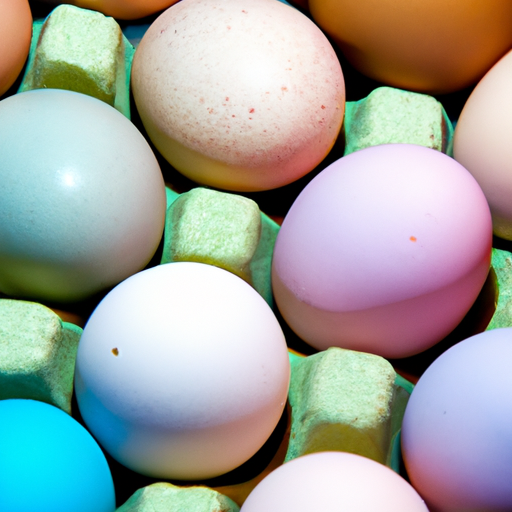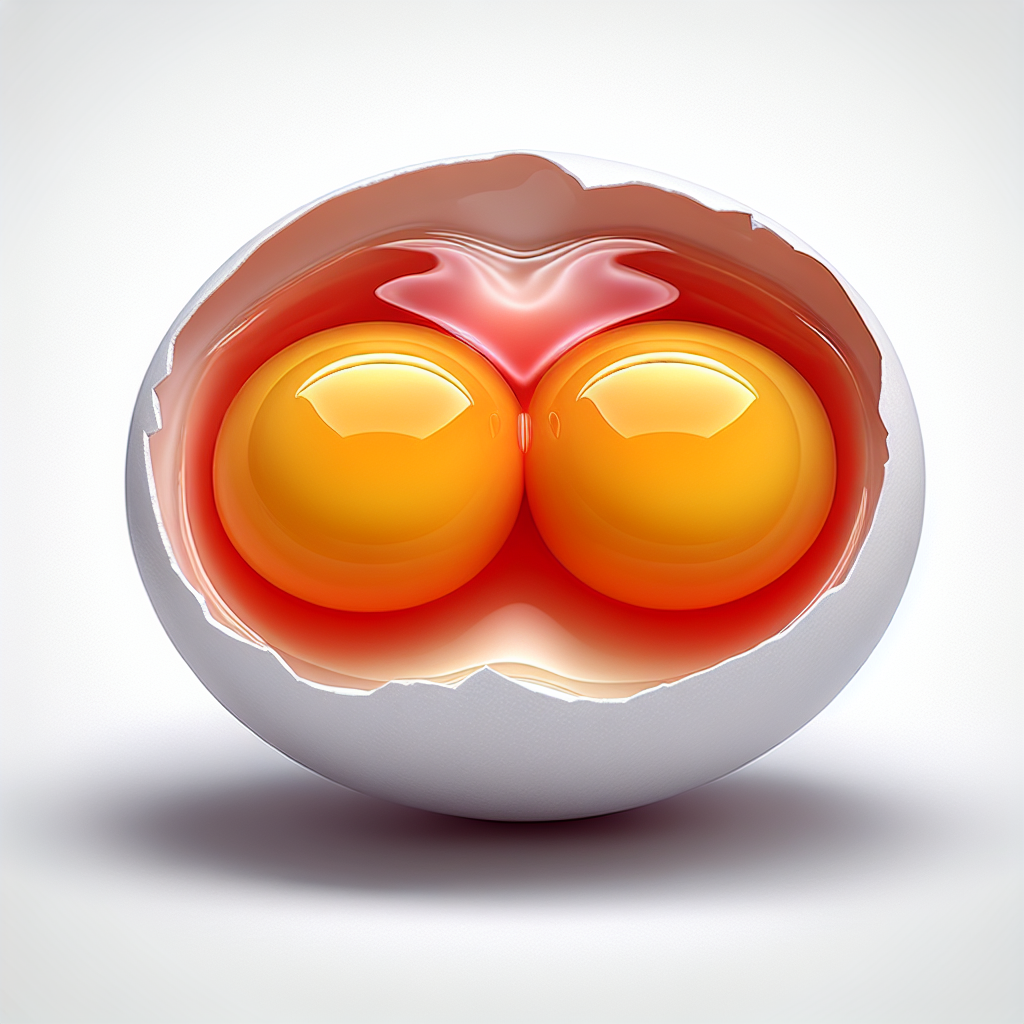Have you ever wondered why eggs come in different colors? From pristine white to pale brown, and even shades of blue and green, the colors of eggshells can vary greatly. While it may seem like a purely aesthetic choice, there is actually more to it than meets the eye. In this article, we will explore the significance of different eggshell colors and how they are determined. By understanding the science behind eggshell pigmentation, you’ll gain a newfound appreciation for the vibrant spectrum of hues that eggs can possess.
Genetics of Eggshell Color
Inheritance of Eggshell Color
The color of an eggshell is determined by genetic factors that are passed down from the parent birds to their offspring. These genes control the production and distribution of pigments, which ultimately result in the characteristic color of the eggshell. Inheritance patterns can vary, but most commonly, the genes responsible for eggshell color are passed down in a Mendelian fashion, meaning that certain genes dominate and determine the color while others are recessive.
Genes and Pigments
The genes responsible for eggshell color are involved in regulating the production of pigments that are deposited onto the eggshell during formation. There are two primary types of pigments that contribute to eggshell color: biliverdin and protoporphyrin. Biliverdin produces blue and green colors, while protoporphyrin produces brown and reddish-brown colors. The different combinations and concentrations of these pigments give rise to the wide range of eggshell colors observed in various bird species.
Variation in Eggshell Colors
The variation in eggshell colors is attributed to differences in gene expression and the interaction between various pigments. Different bird species exhibit a wide variety of eggshell colors, ranging from white and pale blue to vibrant greens, blues, and browns. This diversity in eggshell coloration is believed to have evolved as a means of adaptation to different environments, as well as for camouflage and species recognition purposes.
Environmental Factors Affecting Eggshell Color
Diet and Nutrition
The diet and nutrition of a bird can influence the color of its eggshell. Certain nutrients, such as carotenoids found in vegetation, can enhance the intensity and richness of the pigments deposited on the eggshell. For instance, a diet rich in carotenoids can produce eggs with deeper and more vibrant reds and browns. Conversely, a lack of specific nutrients may result in paler or lighter eggshell colors.
Stress and Hormones
Stress and hormonal fluctuations can also affect the color of the eggshell. When a bird experiences prolonged stress or hormonal imbalances, it can impact the production and deposition of pigments onto the eggshell. This can lead to variations in color intensity or even the absence of pigmentation, resulting in lighter or paler eggshells.
Light Exposure
Exposure to sunlight and ultraviolet (UV) light can play a role in modifying eggshell coloration. UV light can cause photo-oxidation of the pigments on the eggshell surface, leading to changes in coloration. Additionally, birds that nest in different environments with varying levels of light exposure may exhibit variations in eggshell color as a result of adaptation to their surroundings.
The Significance of Eggshell Color
Camouflage and Predation
One of the significant reasons for the variation in eggshell coloration is camouflage and predation avoidance. Birds that build exposed nests in open habitats, such as on branches or cliffs, are more likely to have eggs with mottled patterns or colors that blend in with their surroundings. This provides them with a protective advantage by making it harder for predators to spot their eggs.
Species Recognition and Mate Selection
Eggshell color can also play a role in species recognition and mate selection. Birds of the same species often have similar eggshell colors, making it easier for them to recognize their own eggs and avoid mistakenly incubating eggs from other species. Additionally, mate selection may be influenced by eggshell color, as certain colors may indicate the genetic fitness or health of the individual.
Environmental Adaptations
The diversity of eggshell colors observed across different bird species can be attributed to environmental adaptations. In areas with high predation pressure, birds may evolve to have dark or heavily pigmented eggs, which are more difficult for predators to spot. In contrast, in areas with low predation pressure, bird species may have lighter or less pigmented eggs that are less noticeable to potential predators. These adaptations allow birds to better ensure the survival of their offspring in their specific environments.
Cultural and Symbolic Meanings of Eggshell Colors
Cultural Perspectives
Eggshell colors have been assigned cultural significance and meanings in various societies and cultures throughout history. In many cultures, specific colors are associated with religious or traditional practices, such as using red eggs to symbolize good luck or fertility during specific celebrations. Additionally, the use of colored eggs in holiday traditions, such as Easter, has become widely popular in many cultures around the world.
Symbolism and Superstitions
Eggshell colors have also been attributed symbolic meanings and superstitions. In some belief systems, certain colors are thought to represent different qualities or characteristics. For example, white eggs may be associated with purity or innocence, while black eggs may be seen as a symbol of bad luck or negativity. These symbolic associations can vary significantly from culture to culture and are often influenced by local traditions and beliefs.
Human Influence on Eggshell Color
Selective Breeding
Humans have had a significant impact on the eggshell color of domesticated bird species through selective breeding. By selectively breeding birds with desirable eggshell colors, humans have been able to influence and modify the genetic composition of these bird populations. This has resulted in breeds of chickens and other domesticated birds that produce eggs with specific colors, such as brown or white, to meet consumer preferences and market demands.
Artificial Eggshell Coloring
In some instances, humans have also used artificial methods to change the color of eggshells. This can be achieved by dyeing or painting the eggshells, typically for decorative purposes or as part of cultural traditions and celebrations. However, it is important to note that altering the natural color of eggshells through artificial means has no genetic basis and does not influence the inherent genetic factors that determine eggshell color in bird species.
In conclusion, eggshell color is influenced by a combination of genetic factors and environmental influences. Genes control the production and distribution of pigments, resulting in the wide range of colors observed in different bird species. Environmental factors such as diet, stress, light exposure, and predation pressure further contribute to the variation in eggshell colors. Eggshell color holds significance in terms of camouflage, species recognition, mate selection, and adaptation to the environment. Additionally, cultural perspectives and symbolic meanings associated with eggshell colors have shaped traditions and superstitions. Humans have also played a role in determining eggshell colors through selective breeding and artificial means, although these methods have different implications compared to the natural genetics and environmental factors that influence eggshell coloration in the wild.




